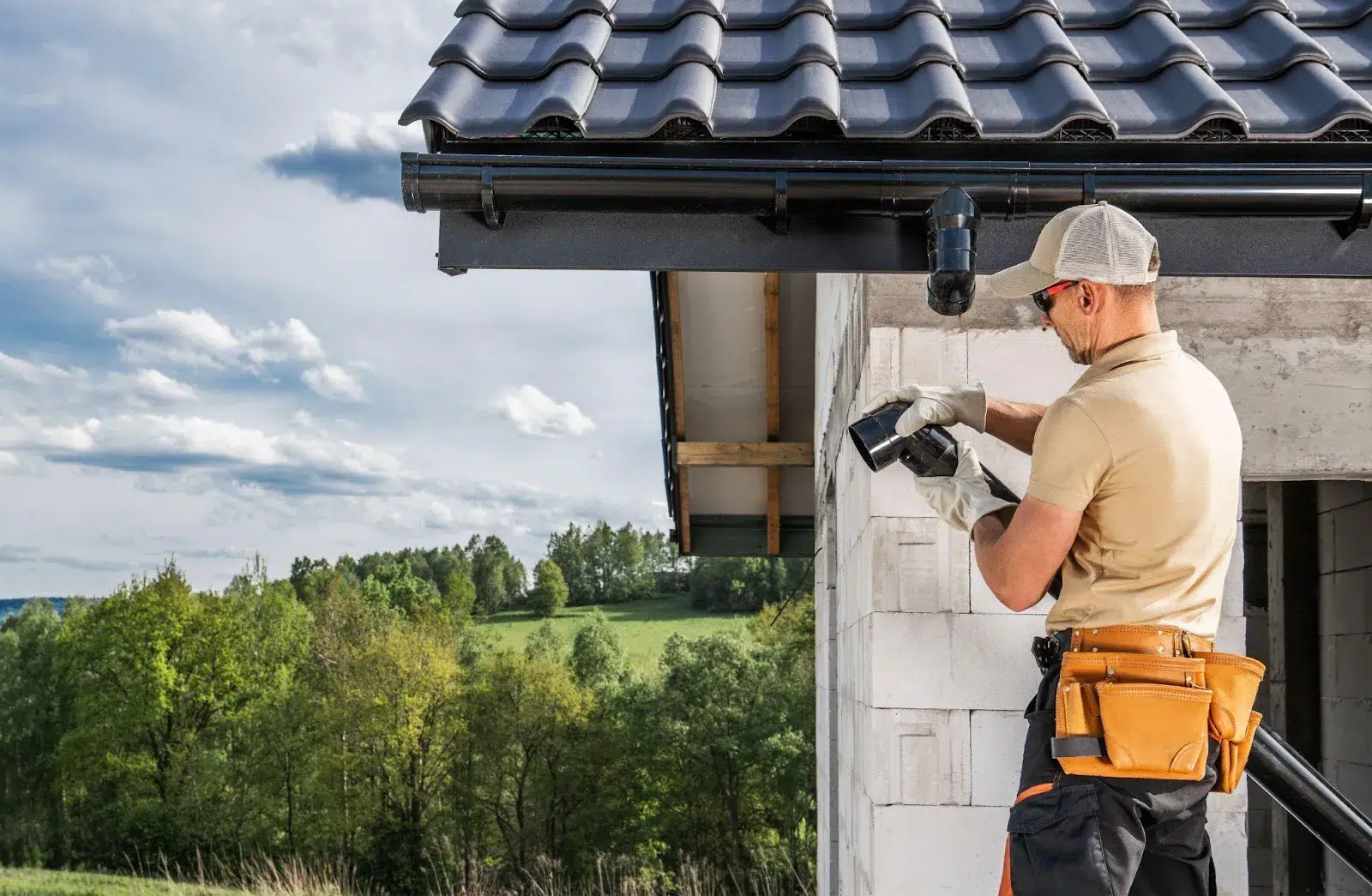Fall in Ontario is a season of transformation. Starting around September and stretching through November (and occasionally into December), it’s a time when nature prepares for rest while offering some of its most breathtaking displays.
Homeowners, landscapers, and gardening enthusiasts often see this as the perfect opportunity to plant trees.
But why?
The answer lies in the unique conditions fall brings.
- Shorter Days: As days grow shorter and nights lengthen, trees face less stress from the sun, allowing roots to establish more effectively.
- Cooler Temperatures: The temperature swings between warm days and cool nights create ideal conditions for root development without the risk of extreme heat.
- Consistent Rainfall: Autumn rains provide ample water for trees to settle into their new home, reducing the need for constant watering.
- Vibrant Fall Colors: Ontario’s stunning fall foliage isn’t just beautiful to look at—it’s a reminder of the rich biodiversity you can add to your space.
For many Ontario homeowners, the burning question is, “Can I plant trees in the fall and What are the best trees to plant in Ontario during fall?”
The answer is a resounding YES.
Fall offers one of the best windows for tree planting thanks to the cooler soil temperatures that encourage root growth.
Unlike spring planting, trees planted in the fall get a head start, establishing strong roots before winter’s frost sets in.
Not only does fall planting lead to healthier trees, but it’s also cost-effective.
Nurseries often offer discounts during this season, and the variety of available species is unmatched.
Whether you’re creating a relaxing outdoor retreat for your family, designing a pet-friendly yard, or planning a low-maintenance landscape for seniors, fall is the ideal time to plant.
In this article, we’ll reveal the best trees to plant in Ontario during fall.
These trees are perfect for creating a healthy, natural, and fun outdoor space, no matter your needs. We’ll also share tips to ensure your planting efforts are successful.
Top 9 Trees to Plant in Ontario During Fall

Fall is one of the best times to plant trees in Ontario.
Cooler weather and consistent rainfall provide ideal conditions for young trees to establish strong roots before winter sets in.
But it’s not just about planting any tree—choosing species suited to Ontario’s climate and soil conditions can make all the difference.
Whether you’re looking to add shade or enhance the aesthetic appeal of your property, our list reveals the top 10 trees to consider planting during fall.
1. Sugar Maple
The Sugar Maple is a beloved native tree in Ontario, known for its dazzling display of red, orange, and yellow foliage during autumn.
Its adaptability to Ontario’s climate and its ability to provide ample shade make it a favorite among homeowners.
The Sugar Maple thrives in well-drained soil and larger landscapes, offering both beauty and environmental benefits, as it supports local wildlife and helps with carbon sequestration.
2. Red Oak
The Red Oak stands out for its vibrant crimson leaves and robust nature. As a durable hardwood, it grows well in various soil types, including the clay-heavy soils common in many parts of Ontario.
Red Oaks are long-lived and adaptable, making them a smart investment for both urban and rural settings. Planting them in fall allows their roots to settle, giving them a head start before spring growth.
3. Serviceberry
Serviceberry trees bring year-round interest to your landscape. In spring, they produce delicate white blossoms, while fall brings fiery foliage and edible berries that attract birds and other wildlife.
This fast-growing tree is perfect for smaller yards or those looking to support pollinators.
Serviceberry trees are low-maintenance and grow well in both urban and suburban environments, making them a versatile choice for many homeowners.
4. Eastern White Pine
For those seeking year-round greenery, the Eastern White Pine is an excellent option. This evergreen tree is one of the most recognizable native species in Ontario and thrives in the province’s cold winters.
It is low-maintenance and provides privacy and wind protection, making it a practical choice for both residential and larger rural properties. The Eastern White Pine’s soft, needle-like foliage adds a soothing touch to any landscape.
5. Birch Trees (Paper or Yellow Birch)
Birch trees, with their striking bark and golden fall foliage, are an elegant addition to any yard.
The Paper Birch, with its iconic white bark, is a popular choice, while the Yellow Birch offers a warm-toned alternative.
Both species thrive in Ontario’s climate and are well-suited to smaller spaces. They bring a natural, rustic charm to gardens and are particularly effective when planted in clusters.
6. Amur Maple
The Amur Maple is compact yet striking, making it ideal for urban and suburban gardens. Its vibrant red foliage during fall creates a stunning visual impact.
This tree adapts well to Ontario’s varying soil types and is highly versatile, thriving in smaller spaces where larger trees might not fit.
Its manageable size and low-maintenance nature make it a favorite for those looking to add beauty without significant upkeep.
7. Hackberry
If you’re looking for a hardy tree that can withstand harsh weather, the Hackberry is a standout choice. This resilient species thrives in both drought-prone areas and Ontario’s colder regions.
Hackberries grow well in urban and rural environments, making them ideal for diverse landscaping needs.
Their tolerance for varying conditions and minimal maintenance requirements make them a go-to option for homeowners seeking longevity in their landscape.
8. Dogwood Trees
Dogwood trees are a favorite for their year-round beauty and ease of care. In the fall, their leaves turn stunning shades of red or purple, while their colorful bark adds winter interest.
Dogwoods are particularly well-suited to wetter soils, making them an excellent choice for properties with challenging drainage.
Their versatility and low-maintenance requirements make them a reliable option for gardeners of all skill levels.
9. Norway Spruce
The Norway Spruce is a robust evergreen that grows quickly and offers year-round coverage. Ideal for privacy, windbreaks, and adding structure to your yard, this tree thrives in Ontario’s colder climates.
Its dense foliage provides excellent shelter for birds and small animals, contributing to local biodiversity.
As a hardy species, the Norway Spruce is perfect for both residential and larger properties needing functional greenery.
Factors to Consider When Choosing Trees For Fall Planting

Here are the factors that matter most when selecting trees for fall planting.
1. Soil Type: Match The Tree to Your Soil
Did you know that not all trees thrive in the same type of soil? Understanding your soil type—whether it’s sandy, clay-heavy, or loamy—will determine which tree species will grow best on your property.
- Sandy Soil: Drains quickly but doesn’t hold nutrients well. Trees like pine or birch are excellent for sandy conditions.
- Clay Soil: Holds moisture but can lead to poor drainage. Oak and elm trees often adapt well to clay soil.
- Loam Soil: A balanced mix of sand, silt, and clay. It’s ideal for most trees, including maples and fruit trees.
2. Sunlight Requirements: Full Sun or Partial Shade?
Trees, like all living things, need sunlight—but not all trees have the same requirements. Misjudging this can lead to slow growth or even failure to thrive.
- Full Sun Trees: These need six or more hours of direct sunlight daily. Think of species like sugar maple or red oak.
- Partial Shade Trees: Require less intense sunlight, ideally filtered or partial sun. Dogwoods and serviceberries flourish in these conditions.
Pro Insight: Observe your planting location throughout the day. Sunlight changes with the seasons, so a spot that seems sunny in summer might get less light during fall and winter. This ensures your trees get exactly what they need year-round.
3. Space And Growth: Consider The Tree’s Future
Many homeowners overlook how big a tree will become. Planting too close to structures, pathways, or other trees can cause problems down the road.
- Mature Height: Think about overhead power lines, rooftops, or nearby buildings. Large species like red oak need ample space.
- Canopy Spread: Some trees, like spruce or birch, grow wide and can encroach on driveways or gardens.
- Root Systems: Fast-growing trees like poplars or willows may have aggressive roots that interfere with foundations or plumbing.
Actionable Tip: When in doubt, leave at least 20 feet of space from structures for larger trees. For smaller ornamental trees, 10 feet is usually sufficient.
4. Native vs. Non-Native Trees: Boost Biodiversity
While exotic species may seem enticing, native trees are often the better choice. They’re naturally suited to local conditions and support biodiversity.
- Benefits of Native Trees: They thrive in local soil and climate, need less maintenance, and attract beneficial wildlife like birds and pollinators.
- Non-Native Trees: These can be ornamental but may require more watering, fertilizing, and pest management. Some, like Norway maples, can even disrupt ecosystems.
Why It Matters: Planting native species like sugar maples or serviceberries helps reduce the spread of invasive species, which can harm local ecosystems and cost municipalities millions in management efforts.
5. Watering Needs: Drought-Resistant or Water-Loving?
Fall planting comes with natural advantages like cooler weather and consistent rainfall. However, understanding your tree’s watering needs is crucial, especially as weather patterns become less predictable.
- Drought-Tolerant Trees: Red oak and hackberry are resilient and can survive with minimal watering once established.
- Water-Loving Trees: Species like dogwood or birch prefer consistent moisture, making them ideal for properties near ponds or in areas with good drainage.
Expert Tip: Even drought-resistant trees need regular watering during their first two years to establish roots. Using mulch around the base helps retain moisture and protect roots from fluctuating temperatures.
Step-by-Step Guide to Planting Trees in Fall
Fall’s cooler temperatures and consistent rainfall create ideal conditions for root establishment, giving your trees a strong start before winter.
However, planting trees requires more than digging a hole and dropping a sapling in. With a little planning and care, you can ensure your trees thrive for years to come.
Let’s walk through a simple yet detailed step-by-step guide to get it right.
1. Prepare the Site
The foundation of a healthy tree starts with the soil. Before planting, test the soil to determine its pH level and nutrient content.
Test Your Soil: Use an affordable home soil test kit or send a sample to a local agricultural extension service. The results will help you identify deficiencies, such as a lack of nitrogen or an imbalance in acidity.
Amend the Soil: Depending on the test results, add organic matter like compost to improve drainage or retain moisture.
2. Digging The Right Hole
The size of the hole directly affects the tree’s ability to grow and stabilize. Many homeowners make the mistake of digging too deep or too narrow.
- Depth: The hole should be no deeper than the root ball. Planting too deeply can suffocate the roots and hinder growth.
- Width: Make the hole 2-3 times wider than the root ball. This allows roots to spread easily and establish a strong foundation.
Avoid This: Don’t line the hole with materials like gravel or plastic. These create barriers that can limit water absorption and root expansion.
3. Positioning The Tree
Placing the tree properly in the hole is critical for its health and longevity.
- Prevent Root Circling: If your sapling is in a container, gently loosen the roots to prevent them from growing in a circular pattern, which can choke the tree over time.
- Ensure Upright Positioning: Use a level to confirm the tree stands straight before backfilling the hole with soil.
Insider Insight: Backfill the hole with the same soil you removed, rather than introducing foreign materials. This helps roots adapt better to their environment.
4. Watering And Mulching
Proper hydration and insulation play a significant role in helping your tree survive its first winter.
- Watering: Give the tree a deep soak immediately after planting. Continue watering weekly, especially if the fall is unusually dry.
- Mulching: Spread a 2-3 inch layer of organic mulch around the base, but avoid piling it against the trunk. Mulch retains moisture, regulates soil temperature, and prevents weed growth.
5. Aftercare Tips
The work doesn’t end once the tree is planted. Proper aftercare ensures the sapling survives harsh winter conditions.
- Protect Against Frost: Use burlap wraps or tree guards to shield young trees from frost damage and animal browsing.
- Inspect Regularly: Check the tree for signs of stress, such as wilting leaves or cracks in the bark. Address issues quickly to prevent long-term damage.
- Avoid Fertilizing: Fertilizers can encourage new growth late in the season, which is vulnerable to frost damage.
Let Us Help You Plant Smarter
Planting trees is an investment in your property’s beauty and value. But you don’t have to do it alone.
Contact us for a free professional consultation to get expert advice tailored to your needs.
Whether you need help with tree planting, soil preparation, or aftercare like mulching and tree trimming services near me in Ontario, Canada, our home management plans offer exceptional value to keep your yard looking its best year-round.




